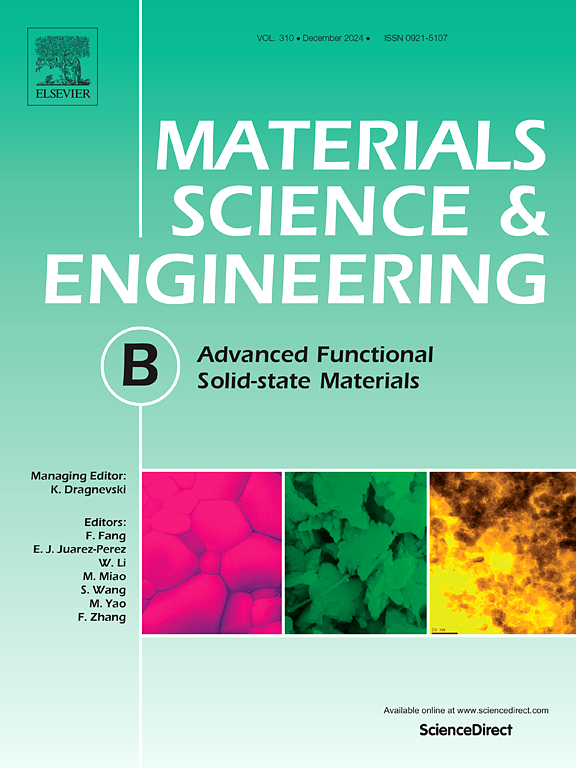Chitosan-PVA-Mg(NO3)2 based biopolymer blend electrolyte membranes for EDLC applications: Structural, thermal and electrical transport properties study
IF 3.9
3区 材料科学
Q2 MATERIALS SCIENCE, MULTIDISCIPLINARY
引用次数: 0
Abstract
Solid biopolymer electrolytes have low ionic conductivity at room temperature. Biopolymer-polymer blending is one promising approach for improving ionic conductivity. The biopolymer Chitosan (CS) has the methyl, amide, and amine groups attached to its backbone, which is responsible for the interaction with the additive/polymer. Biopolymer blend electrolytes (BPBEs) based on [CS-PVA-PEG-200] + xwt% Mg(NO3)2 were prepared and described using techniques XRD, FTIR, SEM, TGA and Electrochemical impedance spectroscopy(EIS). XRD and SEM results show an increase in the amorphousness of polymer electrolytes with salt, Mg(NO3)2 content upto 30 wt% salt due to the interactions between the functional groups of PVA/CS as observed in IR analysis. Multi-step thermal decomposition peaks were observed in TGA analysis, and BPBE membranes are thermally stable up to 120 °C. The optimized sample, BPBE-4, has the maximum bulk dc conductivity ∼ 1.20 × 10−4 Scm−1 at 30 °C with the lowest activation energy, ionic transference number ∼ 0.99, and electrochemical stability window ∼ 4 Volt. The electrical conductivity and dielectric relaxation frequency of BPBEs show a temperature-dependent behavior that follows Arrhenius-type characteristics. All membranes show conductivity spectra that depend on frequency. These spectra follow Jonscher’s power law (JPL). Dielectric permittivity studies indicate that electrode polarisation is effective at low frequencies. The fabricated EDLC, based on the optimal sample, has been analysed using CV and GCD measurements.

求助全文
约1分钟内获得全文
求助全文
来源期刊

Materials Science and Engineering: B
工程技术-材料科学:综合
CiteScore
5.60
自引率
2.80%
发文量
481
审稿时长
3.5 months
期刊介绍:
The journal provides an international medium for the publication of theoretical and experimental studies and reviews related to the electronic, electrochemical, ionic, magnetic, optical, and biosensing properties of solid state materials in bulk, thin film and particulate forms. Papers dealing with synthesis, processing, characterization, structure, physical properties and computational aspects of nano-crystalline, crystalline, amorphous and glassy forms of ceramics, semiconductors, layered insertion compounds, low-dimensional compounds and systems, fast-ion conductors, polymers and dielectrics are viewed as suitable for publication. Articles focused on nano-structured aspects of these advanced solid-state materials will also be considered suitable.
 求助内容:
求助内容: 应助结果提醒方式:
应助结果提醒方式:


